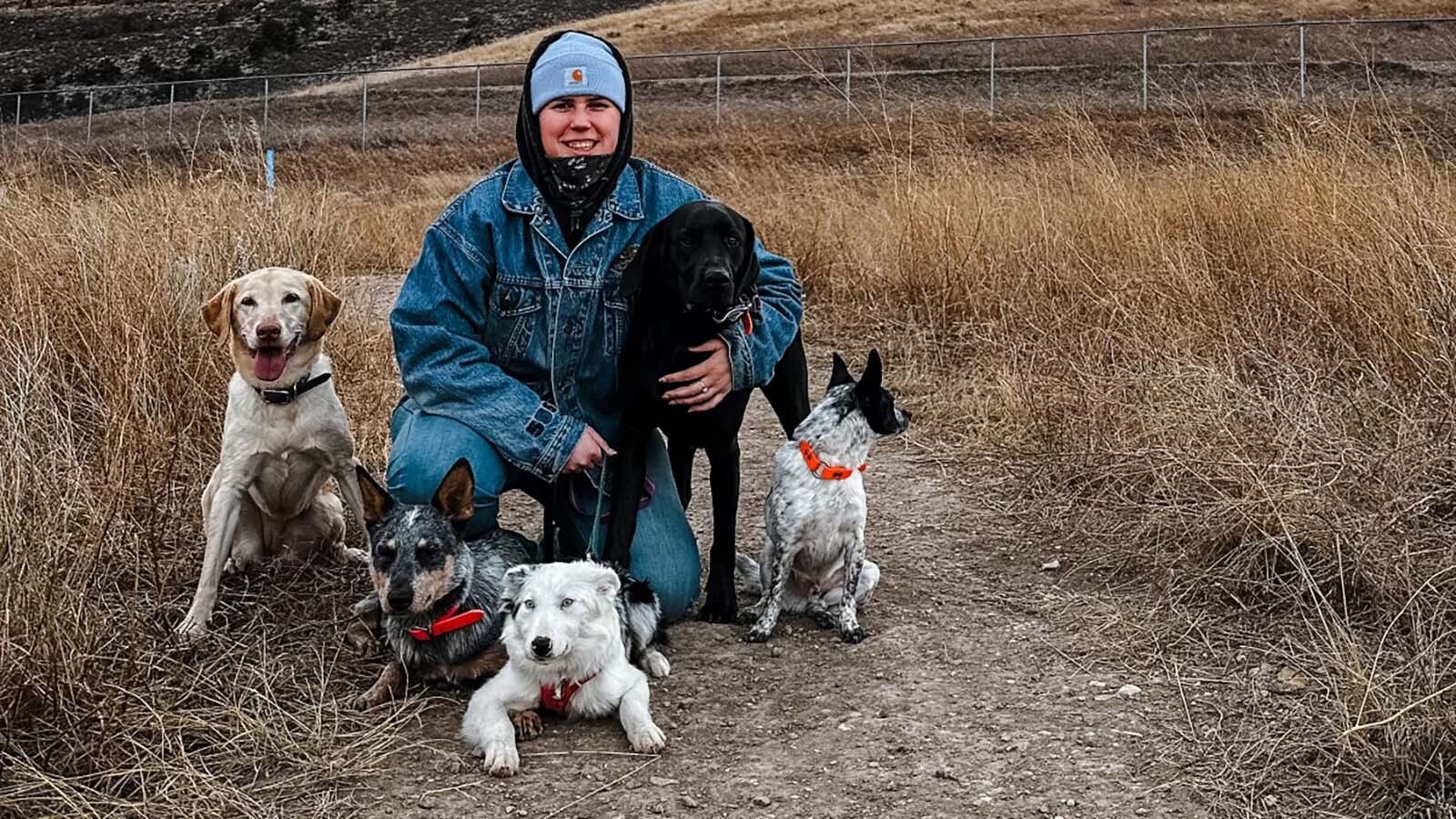Say the word “gold” and strange things start to happen.
Take the gold fever that struck the dusty streets of Shoshoni in 1906, the year the town was officially incorporated.
Women ran around town with aprons full of dust, and well-dressed hotel proprietors willingly stooped to their knees, scooping piles of dirt into dustpans.
The gold rush of Shoshoni is a Wyoming tale of the West, built on small traces of gold that initially appeared promising enough to quickly turn a makeshift tent town into a well-stocked frontier city. It dried up almost as quickly when the big mining ambitions couldn’t match the reality of what was buried in the ground.
The story of Shoshoni's early days was dug up by Thermopolis historian Jackie Dorothy as part of research to celebrate Wind River’s 100th anniversary trek, which makes its first stop in Shoshoni.
Dorothy found the story in the Wyoming Semaphore, a newspaper published in the early 1900s, under the headline, “Rich Streets of Shoshoni” with a sub headline of “ Gold in the Streets of Shoshoni! And this is literally true.”
It was early September and the air was turning crisp, promising that cold snow would be flying soon at Wyoming’s latest little “hell on wheels” tent city, laid out by the Pioneer Townsite Company.
The moniker referred to the many rough and rowdy towns that sprouted along freshly laid railroad tracks, some of which grew into permanent settlements like Cheyenne, Laramie and Shoshoni.
The Pioneer Townsite Company was a subsidiary of the Fremont, Elkhorn and Missouri Valley Railroad, later to be absorbed by Chicago and North Western Transportation Company.
People were flocking to this little railroad town, excited about all the reports of valuable metals in the area — gold, silver, copper.
Surely one of these was going to pan out, and early arrivals would have the best chance of striking it rich.
Amongst these hopeful early arrivals was one Asmus Boysen, who’d made a fortune taking big risks in banking, mining, and real estate.
Fevered Pitch
To understand how so many townsfolk could be fooled into digging up the streets of Shoshoni for gold, it helps to realize just how high the fever was pitching at this time.
The Wyoming Derrick, another newspaper of the time, had reported in 1905 that copper and gold were just lying on top of the ground at Copper Mountain, near Shoshoni, and that the ore seemed to get “better and better as the tunnel was sunk, the gold ore increasing in value, until it is now fabulously rich.”
The Thermopolis Record, meanwhile, reported in its June 3, 1905, newspaper that it was the “almost unanimous opinion of experienced mining men that this district (Copper Mountain) will become one of the richest mining propositions ever developed in the Rocky Mountain Region.”
Shoshoni was ideally situated to serve this new mining district, and newspaper ads of all kinds were promoting Shoshoni as the “Garden Spot” of America, with thousands of acres available for free to settlers.
There was a “home for everybody for the asking” and a mere 35 cents would buy a home seeker’s map and guide to “God’s own country.”
People of the time also knew that Boysen, a man famously and fabulously wealthy, was knocking about with mining claims of his own on Copper Mountain, and that he was planning to construct a dam that would provide the cheap electricity that the copper — and one day gold — mining operations were going to need to be economically feasible.
These cumulative reports and the hyped-up advertising brought almost 2,000 hopeful souls to Shoshoni in 1906.
Talk in the tent city’s 23 saloons, flowing as free as the whiskey, suggested everyone’s future in this new hell-on-wheels town was bright.
Riches were surely just waiting to be found over the next hill.
An Unfortunate Accident And A Rush
It was into that environment that a prospector named Houtz happened to bring some of his gold dust into town from the mountains to have it appraised. He was showing it off in front of one of Shoshoni’s hotels when he accidentally dropped his precious dust in the street.
That had him on his knees, trying desperately to scoop up the gold dust before the wind blew it all away.
“Passersby were asking what he was doing,” Dorothy said.
When he said there was some gold dust in the street, word spread faster than a lightning strike — but it was like a game of tin can telephone. What ultimately came of that was, people thought the streets of Shoshoni themselves had gold just lying around on the surface.
Housewives and hotel proprietors alike brought out brooms and dustpans to scoop up the dust from the street. If nothing else was handy, hands and aprons or pockets would do just as well.
There was a fortune to be had right here in the streets themselves, and no one wanted to be left out.
“Bets were being offered as to whether the sand really contained gold,” Dorothy said. “And when the shining metal began to make its appearance in the bottom of (Houtz’) pan, the excitement shot up to 130 in the shade.”
That brought even the skeptical into the streets, some with picks and shovels, while others just satisfied themselves with whatever dirt they could fill their pockets or aprons with.
“One woman scooped as much as she could carry in the front of a new silk skirt,” Dorothy said.
That load of dirt must have weighed at least 20 pounds, Dorothy said.
Striking Gold On Tough Creek
The local newspaper’s next report didn’t do anything to quell the gold fever running through town, and now literally tearing up the streets of Shoshoni, according to Dorothy.
That report said that the “richest discovery that has been made in this section of the country” had been found on Tough Creek, 7 miles northeast of Shoshoni, in the direction of Copper Mountain.
Gold had been known for some time at Tough Creek, the newspaper story went on to say, but not in a paying quantity.
“The story of the rich strike so close to the town comes from sources whose veracity is unquestioned,” the newspaper article said. “The estimated value of the ore so far has not been ascertained, but it is said to be exceedingly high. A big crowd of prospectors, including women, started for the scene Thursday morning.”
The reports at Tough Creek only intensified the rumors of gold in Shoshoni's streets.
Even The Governor Had Gold Fever
Shoshoni residents weren’t the only ones with a touch of the fever.
Gov. Bryant Butler Brooks told the American Mining Congress there were more than 500 mining claims already near Copper Mountain.
“Only yesterday,” Brooks said, “one of the greatest rushes ever known by mining men took place in central Wyoming when 700 miners flocked into the Owl Creek range of mountains, which has just been opened for mining entry, with the opening of the Indian reservation.”
With talk like that widespread in Wyoming, it didn’t take long for Shoshoni to swell, filling up with hopeful businesses staking out a Main Street claim of their own, hoping to take in their own share of gold and riches by serving a rapidly bursting mining town with lucrative goods and services.
A wide Main Street took shape, with two general stores, two groceries, one hardware, one harness and saddlery, one drug store, a lumber yard, barber shop, meat market, three restaurants, two log cabin hotels, two rooming houses, three restaurants, two blacksmiths and a livery barn.
The Voss Hotel, which, from photos, looked like an exceptionally long log cabin home, boasted 16 “first-class rooms,” as well as a fine parlor, fine dining room, and a sizable 16x18-foot kitchen.
There was also the C.H. King Lumberyard and the Wind River National Bank, started by several hopeful investors that had backed Stockgrowers National Bank of Cheyenne, and many other merchants hoping to cash in.
The Beginning Of The End
A rock-drilling contest in Shoshoni helped capture the town’s excitement for its future. The photo, dated 1908, brought what looked like the entire town out to the town square for a celebration — a town that was beginning to look mighty civilized.
But that was the height of fortune’s favor when it came to mining interests for Shoshoni, according to historical records. Things went downhill from there.
The gold didn’t pan out as hoped. There was some, but it wasn’t economical at all.
There was still some hope for copper, but as the gold fever died down, business owners started drifting away to other towns, like nearby Riverton.
Boysen’s dam, needed to make mining for copper economically feasible, became mired in lawsuits, dousing hopes for that as well.
The dam was ready to operate by 1908, but wasn’t able to steadily produce electricity until 1913.
Lawsuits against the dam continued to pile up through 1930, five years after the dam was silted over and the power plant out of service.
Boysen, who had come to Shoshoni at age 38, lost his entire fortune — more than $3 million. He returned, penniless, to Chicago.
His fortune may have been lost, but his vision was ultimately vindicated.
The Wyoming Bureau of Reclamation removed what remained of his dam in 1948 and built a new dam in a slightly different location. The new dam, completed in 1952, was named after Boysen.
History will long remember Boysen's vision, even though he turned out to be just another speculator among the thousands who came to Shoshoni, Wyoming, with fever dreams of gold, willing to do whatever it took.
As they all learned, to their sorrow, dusty streets are almost never paved in gold, and fortune does not always favor the bold.
Renée Jean can be reached at renee@cowboystatedaily.com.

















